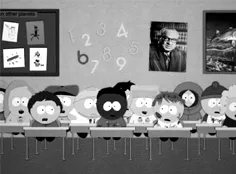《The Medical Republic》案例分享
——亦教亦学:医学生可以让全科医生学到什么What Medcial Students Can Teach GPs
Leon Piterman,黄文静(译),杨 辉(译)
·世界全科医学工作瞭望·

【编者按】 澳大利亚的全科医生具有行业自律性,体现在其自行制定行业标准、自主进行资质考核及自主执业等方面,也体现在《The Medical Republic》这一共享平台上。Leon Piterman是医学学士,医学博士,教育学硕士,英国医生学会会员,澳大利亚全科医生学会会员,Monash University副校长、全科医学教授,从事全科医学临床服务近40年;研究兴趣为慢性病管理、心理健康、医学教育;曾获澳大利亚勋章,医学部医学教育奖,澳大利亚全科医生学会研究奖,香港全科医生学会研究奖等;获多项澳大利亚卫生和医学研究理事会等大型研究项目,发表科学文章和著作章节120余篇,是《全科医学中的精神病学》合作著者。Piterman教授建议我国的全科医生应培养“共和”思想,以为全科医学领域提供更多的平等交流机会。目前Piterman教授定期为《The Medical Republic》撰写文章,本刊深受“医学共和”思想的启发,特邀本刊编委Monash University杨辉教授对Piterman教授的文章进行编译,并进行连载刊登!本期Piterman教授为我们讲述了在临床带教中从实习医学生处学到新知识的经历,并认为临床带教教师和实习医学生之间可以互相影响、互相促进,教亦学,学亦教,教学相长,相得益彰!
1.3168 Monash University,Melbourne,Australia
2.518003 广东省深圳市,罗湖医院集团黄贝岭社区健康服务中心
注:本文首次刊登于《The Medical Republic》
《The Medical Republic》案例分享
——亦教亦学:医学生可以让全科医生学到什么What Medcial Students Can Teach GPs
Leon Piterman1,黄文静(译)2,杨 辉(译)1
全科医生;教育,医学
致力于获取新的知识,有时是一种谦逊品格,但有时也可能是一场彻头彻尾的尴尬。

我大学时候的座右铭是“Ancora imparo”,翻译成中文就是“我仍在学习中”。这条座右铭告诉我们,学习是一件毕生的事。其不仅代表了大学毕业后的持续职业发展,也代表了要不断学习多样化的新技能,包括运动、音乐、艺术及其他领域。虽然这条座右铭非常明确地强调了我们要成为学习者,但却并没有告诉我们应该从哪里去学习、一个人的学习偏好是什么、教师应该具备什么样的天性和素质。
我是一位终生学习者,也是一位长期教育工作者。和许多全科医生一样,我很看重利用各种各样的机会去获取新的知识和技能,比如阅读期刊、互联网搜索、参加学术会议和研讨会、参加网上论坛、与有经验的同事沟通、阅读专家报告、与专家讨论具体案例和观点等。为了能更深刻地领悟学到的知识,我需要将其与临床实践结合起来,最强大、最有用的学习经验,就是把学习焦点集中在自己曾经尝试解决的临床问题上。
多年来,我非常有幸能在全科医学诊所给医学生带教。我总是在想,这个教学过程能让带教教师学到什么呢?来全科医学诊所实习的医学生,是带着他们在大学课堂上获得的新知识来的,他们尝试着将这些新知识应用在全科医学诊疗过程中。我把这些医学生看做新的学习资源,但向这些年轻的准医生学习,可能是展现了我谦逊的品格,但也可能会是一场彻头彻尾的尴尬。
弗洛伦斯74岁,丧偶,一直在我所在的诊所就诊,我给她看诊已经10多年了。她看上去很健康,虽然目前正在接受高血压治疗,也在通过饮食控制2型糖尿病。她有间歇性颈痛和头痛,颈部活动受限,X线片证实为严重颈椎病。我将她的头痛归因为颈椎的退行性病变。有一次看诊,弗洛伦斯告诉我她的父亲患有佩吉特病(Paget′s disease),担心自己的疼痛会是由遗传引起的。我否认了她的猜想,礼貌地告诉她,目前为止佩吉特病被认为是不遗传的。
几个月后,我在诊所给医学生带教,正好弗洛伦斯来就诊。在带教过程中遇到长期就诊的老患者是经常出现的情况,于是我让医学生们对弗洛伦斯进行病史采集和头颈部检查。很快,医学生们给出了报告,认为弗洛伦斯可能患有佩吉特病。我询问他们给出这个诊断的原因,他们让我注意患者头部的大小和形状。他们告诉我,弗洛伦斯有一顶很昂贵的帽子,但现在却戴不上了,而且她有头痛的症状。我赶紧为弗洛伦斯安排了颅脑X线片检查,检查结果证实了医学生们的诊断。我很自然地对医学生们表示了赞赏,并向弗洛伦斯道歉,然后将弗洛伦斯转诊给适合的专科医生。我感到内疚和羞愧,但弗洛伦斯之后仍会来诊所找我就诊,这让我感到很安慰。
那么,在这个过程中我学到了什么呢?首先,我需要认真聆听患者的担心,然后积极应对,而不是单纯否定。其次,我意识到在临床上解决内分泌问题时,应注意患者外观上的微妙变化。临床上一些习以为常的表现,容易受到医生的忽视,这也常是误诊的原因之一。解决这个问题的方法很简单,明智的医生会采取开放和客观的态度,让其他医生(如上述故事里的医学生)来给出一个诊断。像我这样经验丰富的全科医生,每天会接诊很多患者,对患者外观上的细微变化敏感度较低,而年轻的医生和医学生会很容易就注意到这一点。
上述故事发生一段时间之后,年轻妈妈贝姬带着她4个月大的男婴杰米来就诊。杰米有明确的遗传性过敏性皮炎家族史,典型表现为湿疹,贝姬给杰米用了保湿霜但效果甚微。在前次就诊时,我曾建议贝姬使用低剂量的氢化可的松软膏和湿敷料。治疗有一定疗效,但很显然并未解决问题。我的医学生对孩子进行了检查,然后问我是不是可以推荐贝姬使用漂白粉治疗,就是每天在孩子的浴盆中加两茶勺的漂白粉。这个建议让我很震惊,贝姬也感到很惊讶。医学生说:“是的,教授,用漂白粉。因为葡萄球菌会加重湿疹,而漂白粉可以抑制皮肤上的葡萄球菌,这是墨尔本皇家儿童医院的儿童湿疹诊疗指南提供的方法”。1个星期后,贝姬抱着杰米来诊所复诊,杰米的皮肤症状明显改善!
我们是教师,我们要给医学生带教,但教师从某种角度而言也是学生。我喜欢给实习医学生带教,不仅是为了感受教师的光荣,也是为了从他们那里学到更多知识。我越来越相信,教亦学,学亦教,教学相长!
译者注:(1)Ancora imparo:我仍在学习中,这是Monash University的座右铭。(2)佩吉特病(Paget′s disease):有两种疾病被称为佩吉特病,一种是乳房佩吉特病,表现为皮内或皮下腺体癌,常源于乳腺管;另一种是佩吉特骨病,即畸形性骨炎、多发性骨膨大及骨质软化症。(3)婴儿湿疹的洗浴水配制:由澳大利亚墨尔本皇家儿童医院皮肤病专家提出,具体指南为“水温≤30 ℃,使用容量为10 L的浴盆,在洗浴水中加入盐/漂白剂/浴油,洗浴后避免用清水冲洗,洗浴后使用清洁毛巾擦拭,每次洗浴时可蘸湿面部和头部。在洗浴水中加入浴油(1~2瓶盖/次)、池盐(100 g/10 L)、漂白剂(4%,12 ml/10 L)。首先使用此配方洗浴水1次/d,持续1个月;然后3次/周,持续1个月;然后1次/周,持续1个月。如湿疹复发,则增加漂白剂配方洗浴频率,并断奶。
志谢:特别感谢原文出版者《The Medical Republic》同意将此文编译后刊登于《中国全科医学》。
A dedication to acquiring new knowledge can sometimes be humbling,and sometimes it can be downright embarrassing.
My university′s motto is "Ancora imparo",which translates as "I am still learning".
It implies that learning is a lifelong enterprise not limited to ongoing professional development on leaving university,but applying equally to learning new and diverse skills across a range of endeavours,be they sport,music,art or any other field.
While the motto quite rightly focuses on the learner,it is silent on the sources of learning,one′s learning preferences and the nature and qualities of the teacher.
As a lifelong learner,and long-time teacher,like many of my GP colleagues I value the opportunity to use a variety of sources for acquiring knowledge and skills.I read journals,go online,attend conferences and workshops,participate in webinars,talk to experienced colleagues and read and discuss reports from specialists.
To construct meaning from learning I need to contextualise new knowledge in relation to patient care.My most powerful and useful learning experiences have,therefore,centred on patient problems that I have tried to solve or to resolve.
For many years I have had the privilege of teaching medical students in my practice.I have always thought that teaching teaches.
Medical students bring newly acquired biomedical knowledge to their general practice encounters.They have added to my sources of learning,however there have been occasions when this learning experience has been humbling,at best,and embarrassing,at worst.
Florence was a 74-year-old widow who had attended our clinic for a number of years.I had looked after her for at least 10 of these years.She seemed in good health despite being treated for hypertension and type 2 diabetes controlled on diet alone.
She had a long history of intermittent neck pain and headache associated with restricted neck movement and X-ray evidence of advanced cervical spondylosis.
I attributed her headaches to the degenerative disease in her cervical spine.On one occasion she informed me that her father had suffered from Paget′s disease and wondered whether she may have inherited this,resulting in headaches.I dismissed this,politely informing her that as far as I knew there was no genetic basis to Paget′s disease.
Some months later I had medical student in the clinic during one of Florence′s visits and as was my normal practice I asked the student to take a history and in this case also examine Florence′s head and neck.The student soon reported back that she felt that Florence had florid Paget′s disease of the skull,supporting her diagnosis by alerting me to the size and shape of Florence′s head,the fact that she could no longer wear her cherished hats… and,of course,the headache.
An urgent skull X-ray confirmed the student′s diagnosis.Naturally,I heaped praise on the student,apologised to Florence and referred her to an appropriate specialist.Guilt-ridden and ashamed,I was grateful that Florence continued to attend our clinic.
So what did I learn from this encounter? Many things about myself and my interaction with patients.I needed to listen carefully about the patient′s concerns and ensure that I addressed them and didn′t dismiss them.
I realised that when it comes to endocrine conditions,where changes in appearance may be subtle,familiarity may breed misdiagnosis,and it is easier for a clever colleague with an open,unbiased approach,in this case a medical student,to make a diagnosis than it may be for a seasoned campaigner like me,who sees the patient on a regular basis and is oblivious to the subtle changes in the patient′s appearance.
Some time later I had an encounter with a young mother,Becky,and her four month-old male infant,Jamie.
There was a strong family history of atopy,including eczema.Jamie had a rash typical of eczema which Becky had been treating with moisturisers,without much response.On a previous visit I had suggested low-dose hydrocortisone ointment and wet dressings.
While this resulted in some improvement,it was clear that the problem was far from resolution.The medical student examined the baby and asked me if I had recommended bleach treatment… two teaspoons in the bath each day.
"Bleach!" I exclaimed,as I looked at the surprise on Becky′s face."Yes",the student replied,"it kills dermal staphylococcus which may exacerbate eczema.It is in the Royal Children′s Hospital guidelines for treating eczema."
Becky and Jamie returned a week later.Jamie′s skin had never looked better.
The value of having a medical student in practice was once again reinforced as was my belief that teaching teaches.
General practitioners;Education,medical
R 197
A
10.3969/j.issn.1007-9572.2017.34.003
PITERMAN L.亦教亦学:医学生可以让全科医生学到什么[J].黄文静,杨辉,译.中国全科医学,2017,20(34):4229-4231.[www.chinagp.net]
PITERMAN L.What medical students can teach GPs[J].HUANG W J,YANG H,translators.Chinese General Practice,2017,20(34):4229-4231.
2017-10-08)
王凤微)

